For any question,
please contact us here :
rainerpfnur@gmail.com
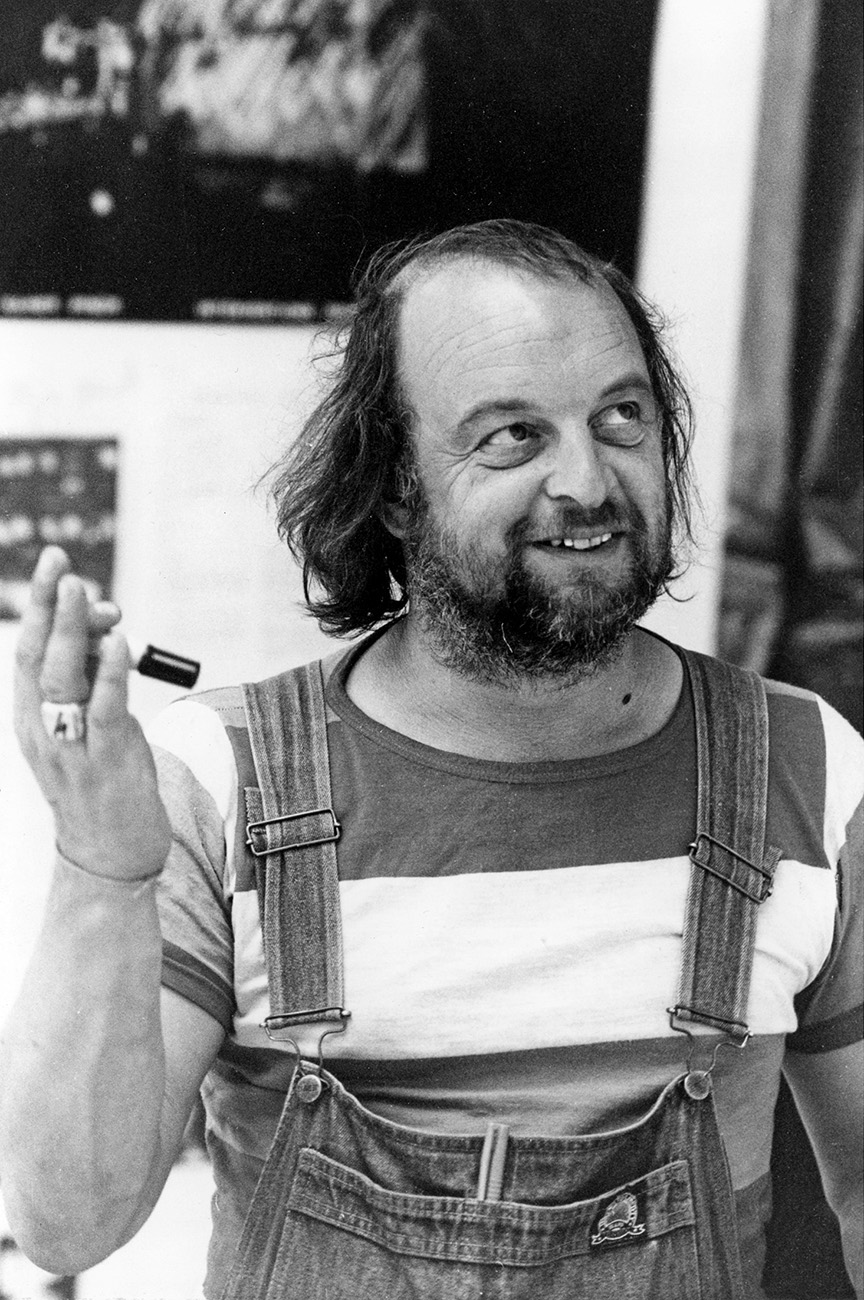
English — Français
Rainer Pfnür (1939-2005) is a German painter and printmaker influenced by the movement of Abstract Expressionism from the United States, represented by painters such as Franz Kline and by Italien Art Informel, particularly Emilio Vedova.
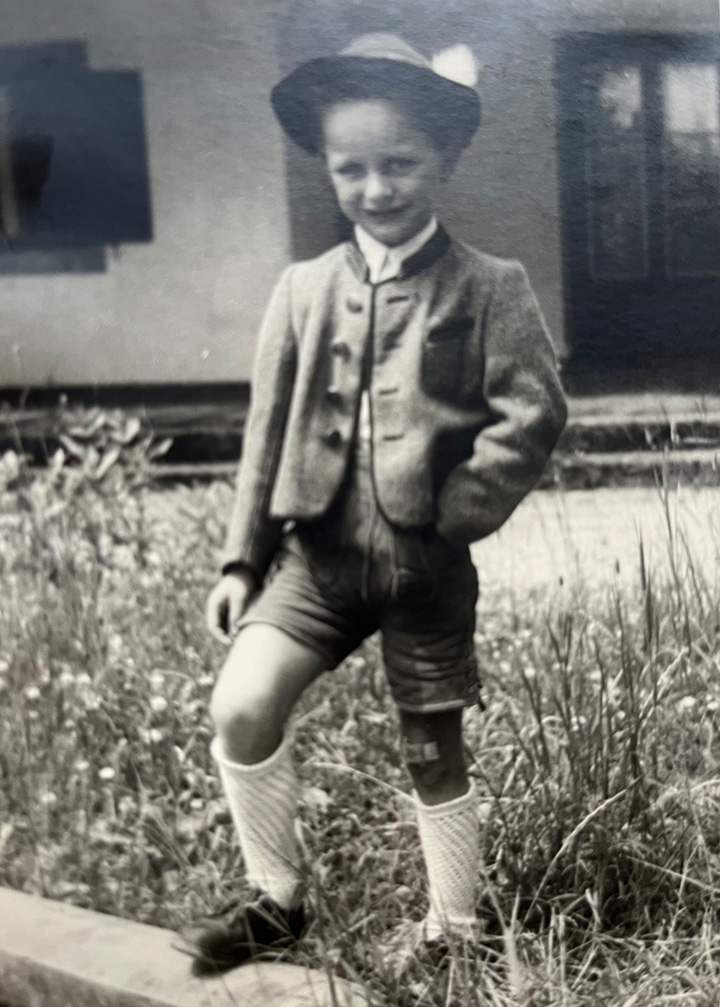
First Years
As chance would have it, Rainer Pfnür was born and raised in Berchtesgaden, a small town in the Bavarian Alps, in the south of Germany, which became the landmark of National Socialism. The place and the moment would impact Pfnür’s trajectory, a trajectory in rupture with the forgetful world of the German « Economic Miracle ». Like many young people of his generation, traumatized by the scale of the disaster, Rainer would deal, in his own way, with what was fortuitous about the event.
Pfnür leaves Berchtesgaden to study in Munich, in a college of design and decoration, attracted by the cultural ferment of the capital of Bavaria. He travels (Greece, Egypt, Lebanon, Israel) and participates, in 1967, as a student at the prestigious Summer Academy in Salzburg, founded in 1953 by Oscar Kokoschka as a « school of the gaze ». His teacher is Emilio Vedova and a year later, Rainer will become his assistant in Venice.
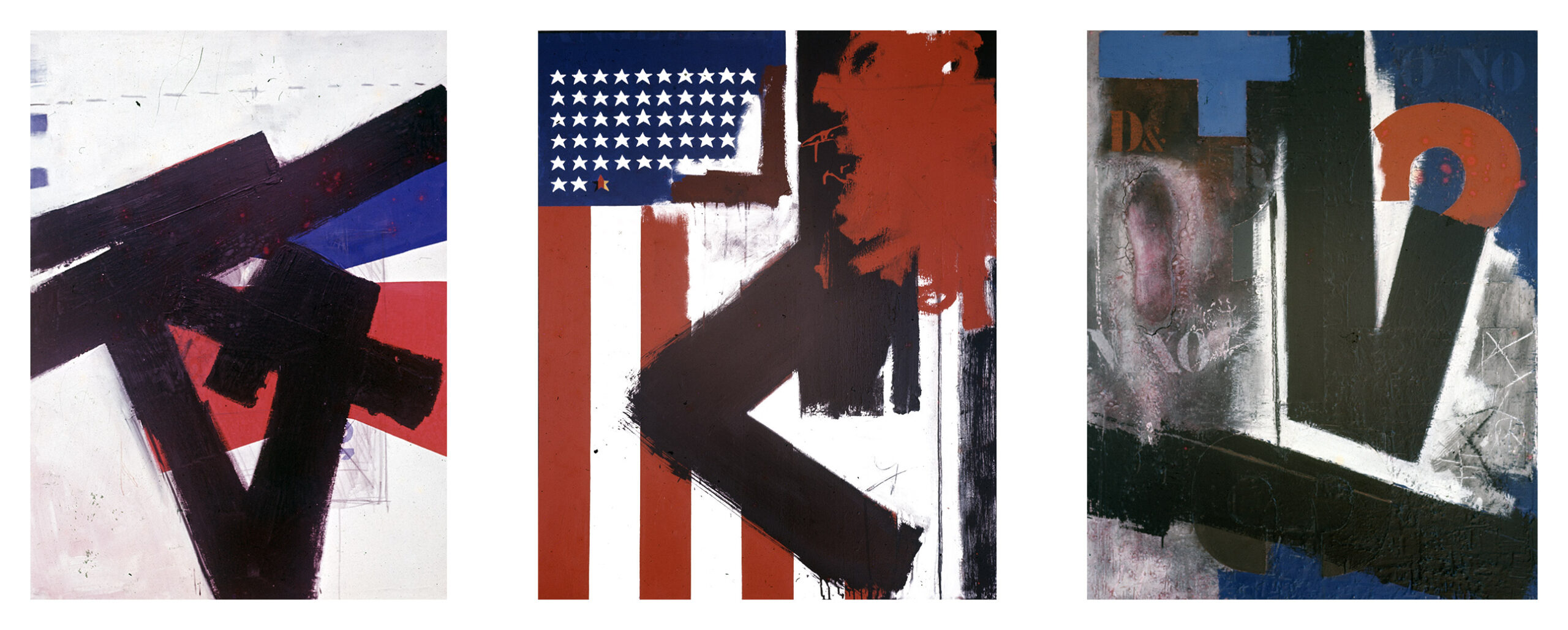
From the late sixties onward, Pfnür works with signs, which will become the basic element of his painting. In these works, large black gestures occupy a generally large-scale canvas. The titles given to these works are openly political : May, Protest, Amerikka… « Man is dominated by signs, by advertising images : the star of Mercedes, Coca-Cola and Bildzeitung…Rainer Pfnür not only makes visible the omnipresent dictatorship of signs, which disguise themselves as services…He puts his mark on them, creating a gestural intervention on a catalogue universe. » – Harald Raab, « The Dictatorship of Signs », Die Woche, January 15, 1976.
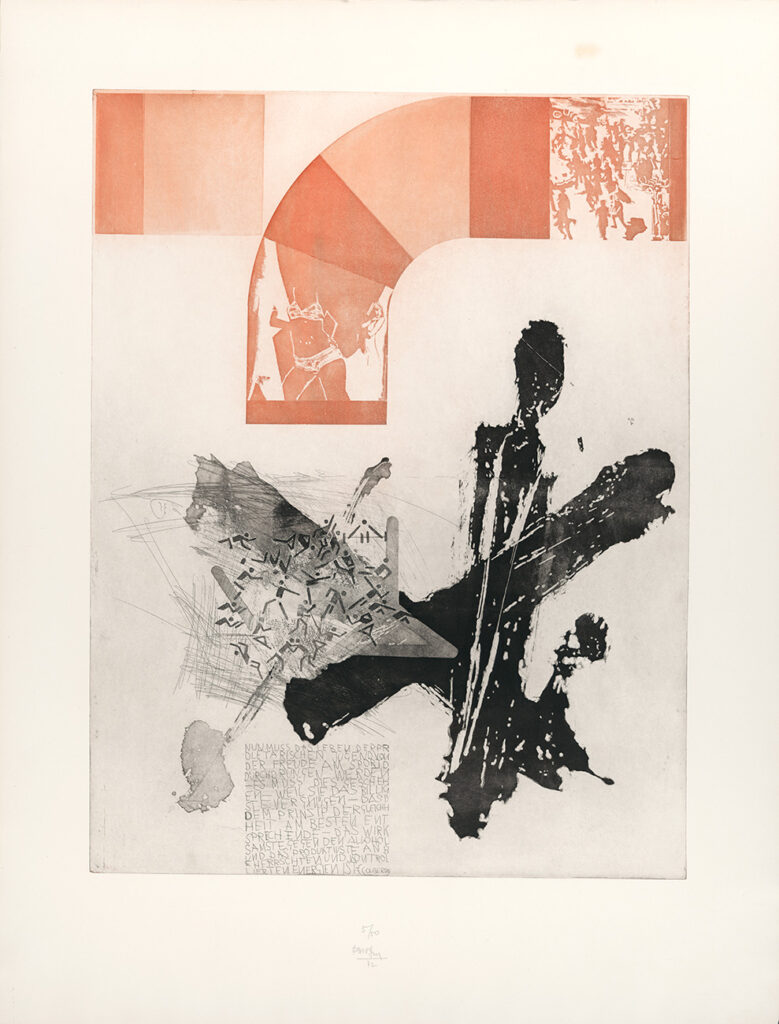
In parallel with these paintings, Rainer Pfnür continues his graphic work with a series of etchings related to recent events : the immolation by fire of a twenty-year-old young man in the center of Prague, Jan Palach, in protest against the crushing of the Prague Spring by the Soviets and the Olympic Games in Munich, summer 1972. The Viva Olympia series will be integrated into a collective exhibition at the Kunstverein in Munich.
At the invitation of the Sardinian sculptor Pinuccio Sciola, Rainer Pfnür participates in the “Paese Museo” in the streets of the small village of San Sperate in Sardinia. He designs his installation in the least spectacular place of the village: a sculpture in charred wood, an out of order Fiat 600 hanging on a wall, two millstones as well as colored geometric shapes affixed to the gables of the houses, like so many disconcerting counterpoints.
The 1970s
After discovering Ibiza in 1971, through the architect Erwin Broner whom he met in Venice, Rainer Pfnür stays there regularly for long work periods, especially at Santa-Gertrudis de Fruitera, whose landscape, in the heart of the island is for him, like a large open-air workshop. From 1974 onward, he lacks the energy of a big city and he decides to move to Paris, returning regularly to Munich and Ibiza.
Gestural intervention, a daily exercise in close combat with the canvas, now applies to Pfnür’s collages, enlarged and reproduced in black and white on an emulsified canvas. These works, made up of images cut out and diverted from magazines, include the three painted faces of women alongside the black and white one of Holger Meinz, who died following a hunger strike in 1974 during the trial of the first generation of activists from the Rote Armee Fraktion (RAF). In parallel, Pfnür creates a series of etchings entitled Time is Money and a series of lithographs Daily Images whose formal proposal remains close to that of the canvases.
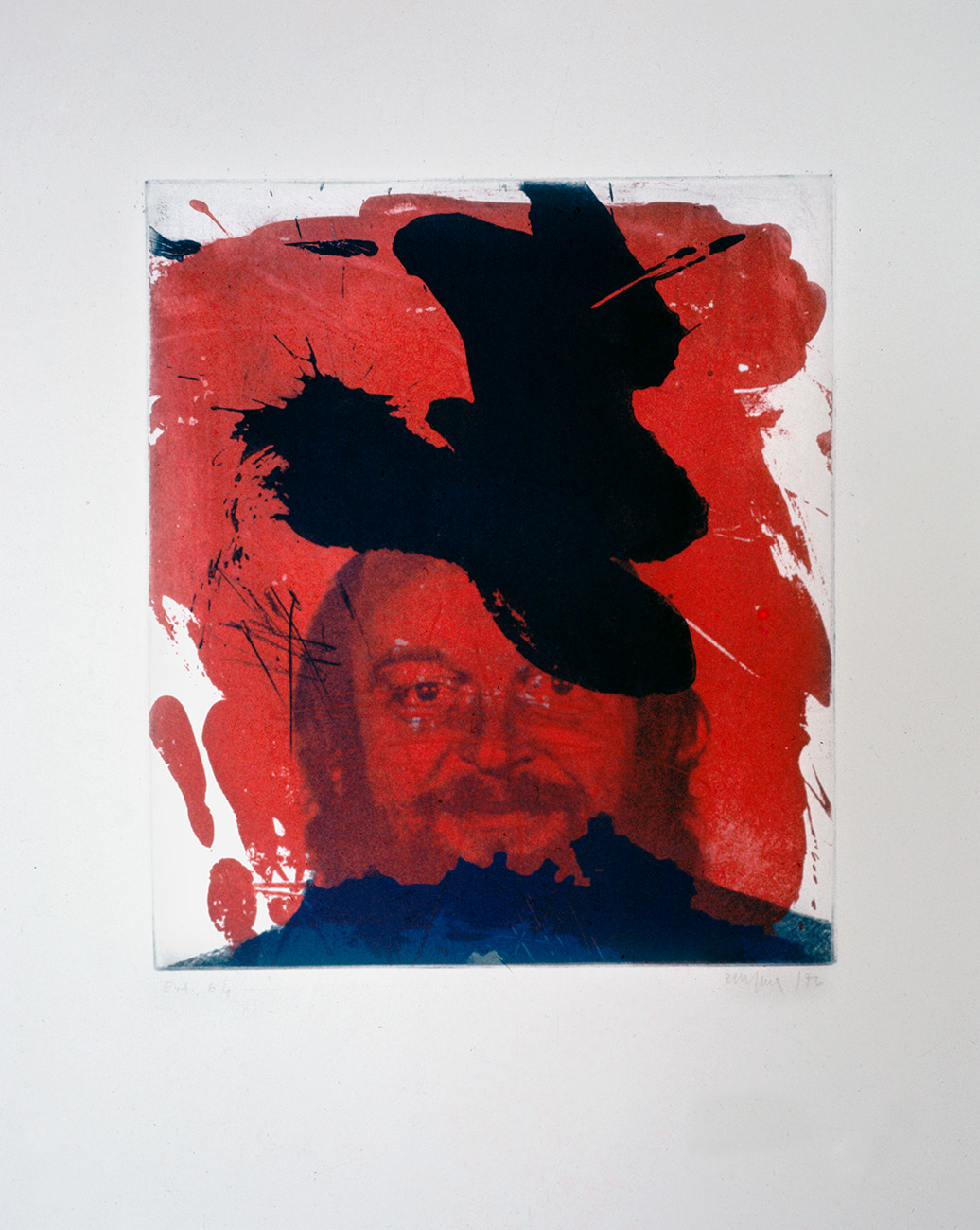
There follows a series of canvases and etchings in which his identity photo, taken at a photo booth, is enlarged to the size of the support. The series of etchings, entitled Je est un autre, in reference to Arthur Rimbaud, is associated in a portfolio with a fragment of L’Innommable by Samuel Beckett. It was exhibited at the Kerlikovski gallery in Munich in 1977. It is assumed that the series of canvases Sequenzen against a backdrop of contact sheets, photographs not yet selected, belong to the artist’s daily life.
To close the decade, Pfnür creates a series dedicated to Spanish poets in exile, the generation of 1927. The gesture on the canvas becomes more intimate by diversifying into scriptural signs, arranged in columns. These Love-Letters will be presented at the Tanit gallery in October 1979.
In parallel, a random visual environment composed of 640 reworked slides linked to an electronic system, initiated by noises, cries or music, is projected at the Kunsverein in Munich (1979), at the Basel fair (1980) and at the Ibiza Contemporary Art Museum (1983).
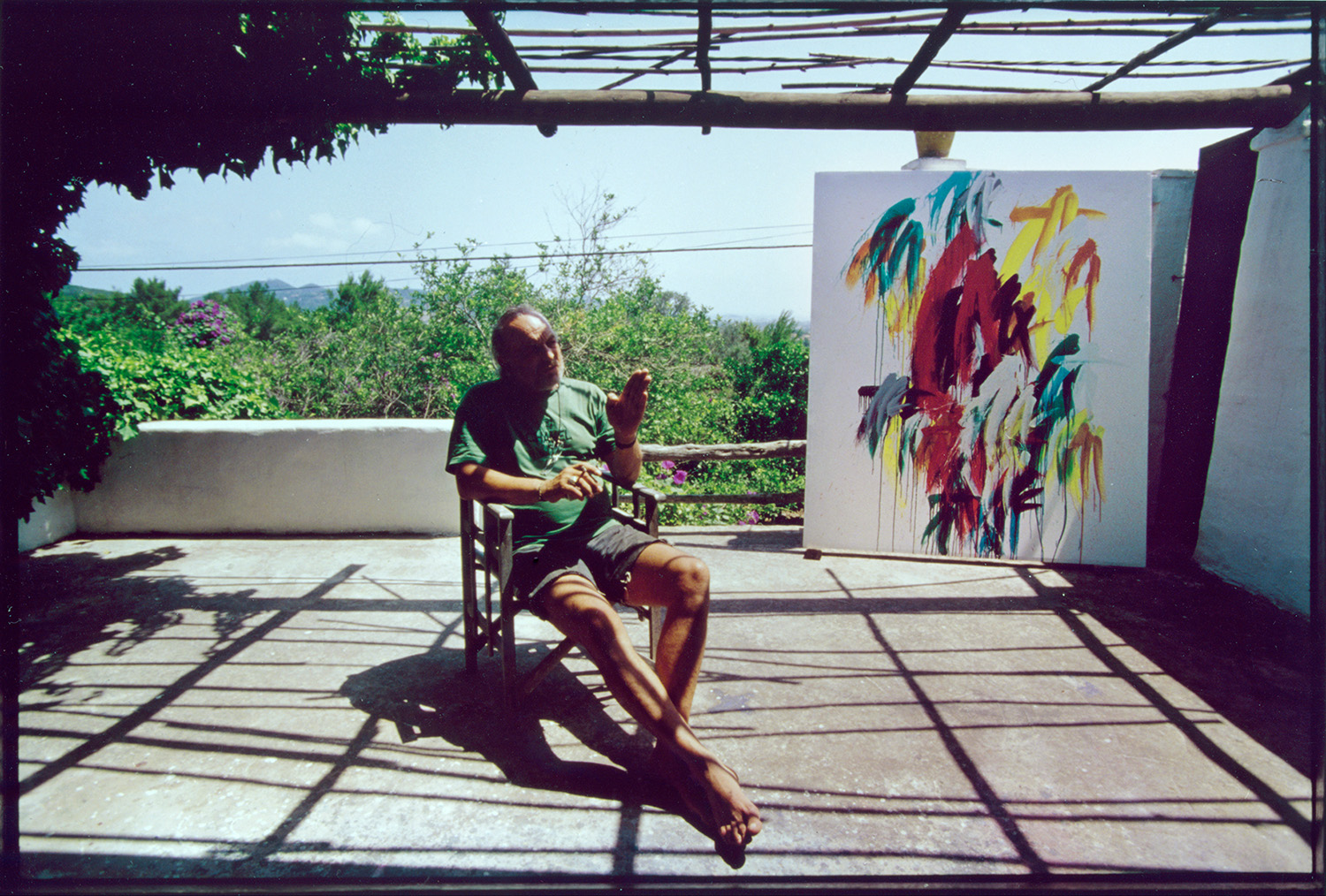
The 1980s
Henceforth, the signs overlap and respond to each other in Pfnür’s work, producing a weave that is both dense and ethereal, all in rhythm and variation. C-Installation is inaugurated in 1982 at the Kunsforum of the Lenbachhaus in Munich. « The place is apprehended by Rainer Pfnür as a painting », writes Helmut Friedel, then director of the museum. He continues : « From a distance, these signs evoke typographical characters which would compose like a text from which all semantics would be absent, a text which should be taken here in its Latin meaning of ‘weaving’. Seen up close, the signs themselves are formed out of superimposed elements of seven different colors : black, red, blue, pink, orange and two shades of green – which intermingle until they dissolve into the general structure of the canvas. Pfnür draws these signs with a single momentum that only ceases when he reaches the limit of his physical abilities… In a way, he approaches the concept of a Roman Opalka, with his endless rows of numbers. Painting, as a gestural activity, becomes the proof of his own existence. »
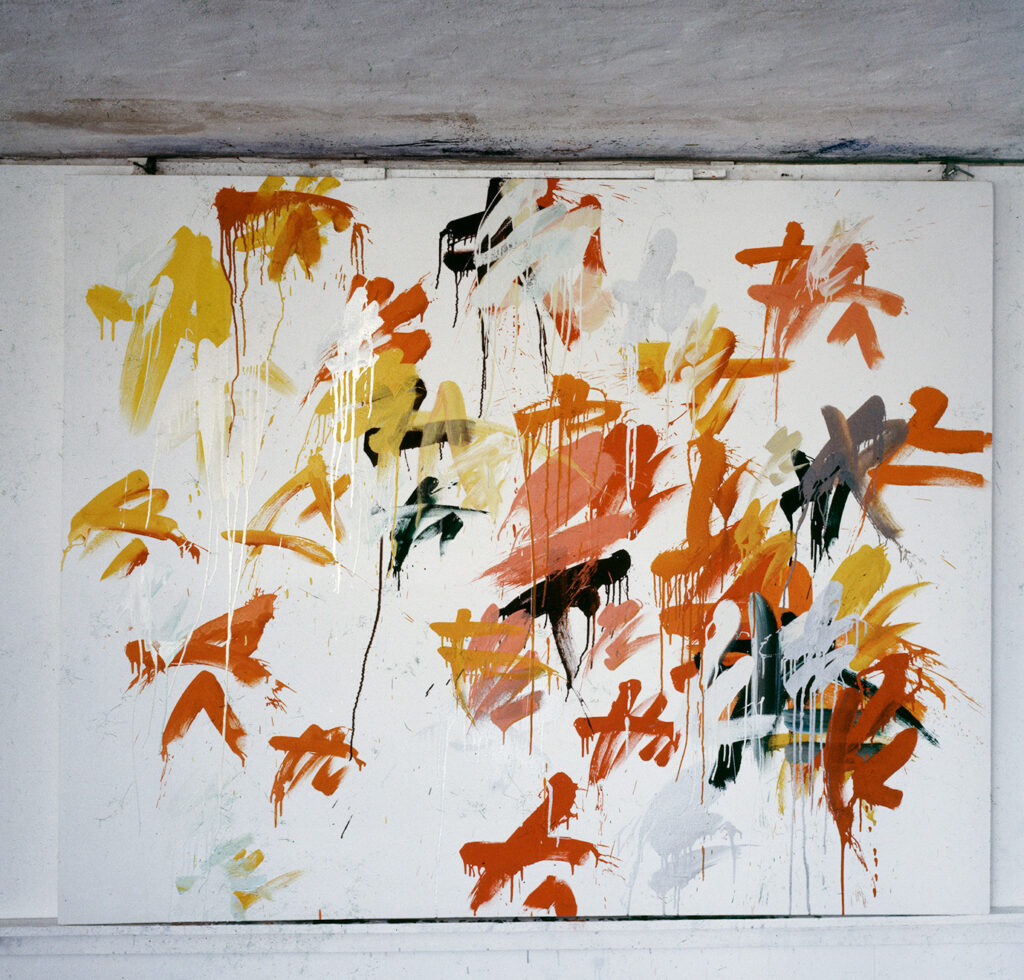
In the years that follow, the color signs become more individualized and expanded. The spontaneity and speed in the execution of the gesture, of which the visibility of the brushstrokes keep track, mark the presence of the artist’s body in movement. « If Rainer Pfnür’s painting resembles anything, it is probably the states of life » writes Yves Deniau, director of the Rodez Museum of Fine Arts on the occasion of the exhibition at the Foch Room in 1988.

« This work with signs, in their superpositions and in their choice of colors, creates energetic surfaces – like jazz, which provides a type of listening of the same order. This work is still comparable, » he adds « to that of a physicist. » Developing this formula will allow Pfnür to merge with his adventure of being alive.
The Spanish philosopher Eugenio Trías will emphasize these characteristics in Rainer Pfnür’s work on the occasion of Pfnür’s exhibition at the Carla Fuehr gallery in 1986 by acknowledging that « The sign, from its strict pictorial limitation reveals a material vocation that suggests the space of sculpture and a poetic and musical vocation, evident in the rhythms, repetitions and differences that the signs weave together between them. »
The 1980s would see several exhibitions at the Carla Fuehr gallery in Munich, the Lang Gallery in Vienna, the Nane Stern gallery and the German Cultural Center in Paris as well as a first exhibition at the Carl Van der Voort gallery in Ibiza.

At the same time, in school notebooks, like a monk, Rainer Pfnür practices gestural writing exercises. He approaches, in his own way, the reality that surrounds him with forms that belong to him – news, first draft sketches of works, drawings, personal considerations : « which means lucidity and sensitivity, irony and pain, play and reflection » according to the writer Vicente Valero in a commentary on the notebooks exhibited after the painter’s death at the Sa Nostra Foundation in Ibiza.
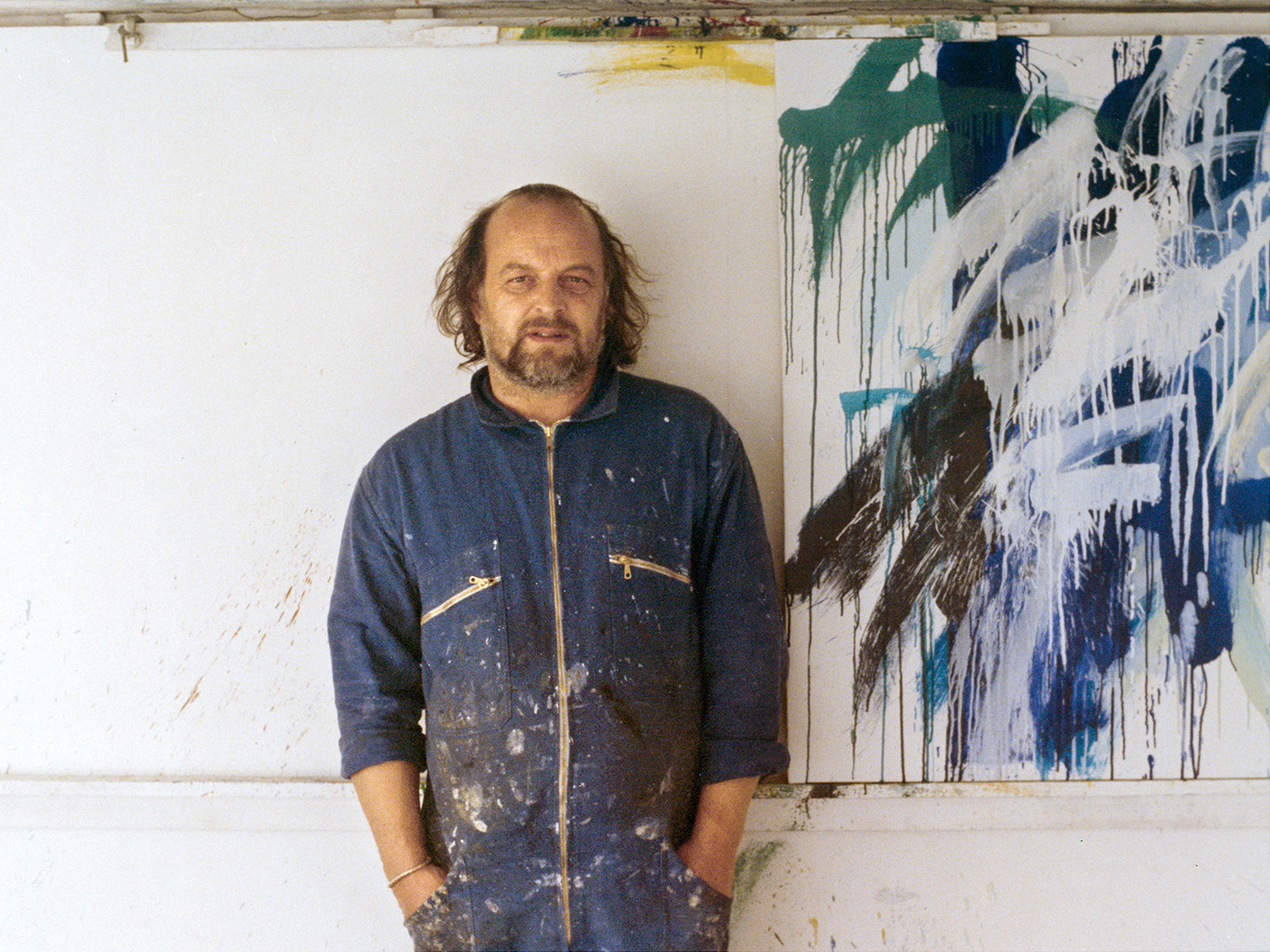
The 1990s and Pictogram
In Munich in 1991, Rainer Pfnür appropriated the uniqueness of the immense entrance to the Central Customs Office. The gaze apprehends both a marble slab bearing the inscription Verticale, the title of the installation, a sculpture made up of 72 charred wooden beams and a set of five canvases.
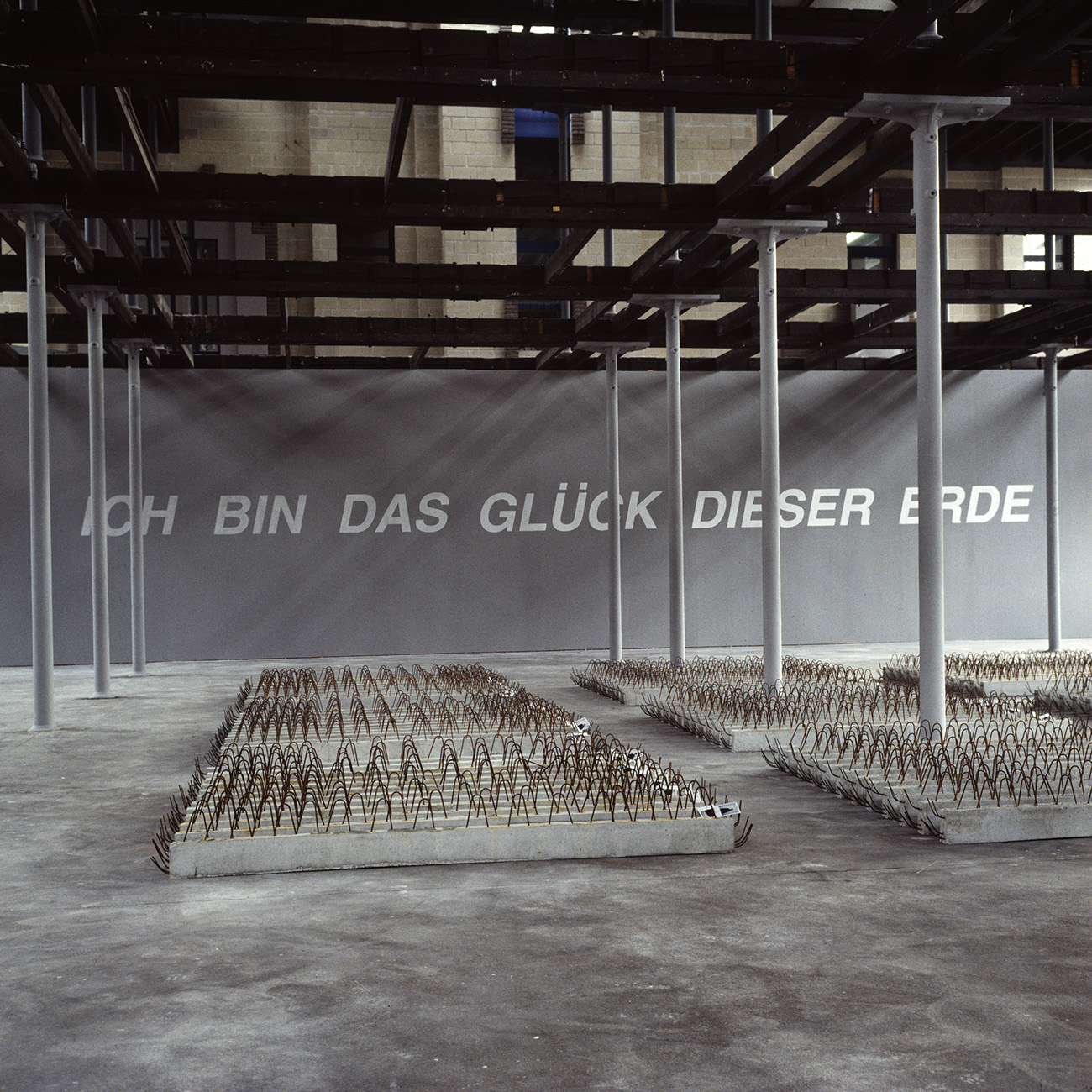
In Rouen in 1993, Pfnür is one of three artists asked to invest in historical spaces of the city in order to explore the concept of « Genius loci ». Genevieve Breerette wrote : « At the Usine Fromage, Pfnür started by destroying a few walls, less to update the architecture of the room than to create a gap, a place to fill… Using different styles, the three artists share a common language, that of discontinuity, fracture, dysfunction, instability… » (Genevieve Breerette, Le Monde, Saturday January 1st, 1994.)
In the former textile factory, rehabilitated to become the Normandy School of Architecture, three distinct sequences inhabit the space devolved to Rainer Pfnür : a brick wall, a set of 108 beams placed on the ground and on a large gray wall, the title of an unmade film by filmmaker Rainer Fassbinder : Ich bin das Glück dieser Erde, ( I am the Happiness of this Earth).
Here, Rainer Pfnür proposes to make a trip of a thought in a space of silence. As the art critic Philippe Piguet underscores it is « a device of extreme destitution, of extreme precariousness. » Each of the beams is identified by a Polaroid portrait of a student from the school of architecture : « The future, perhaps the happiness of this earth », stated Pfnür.
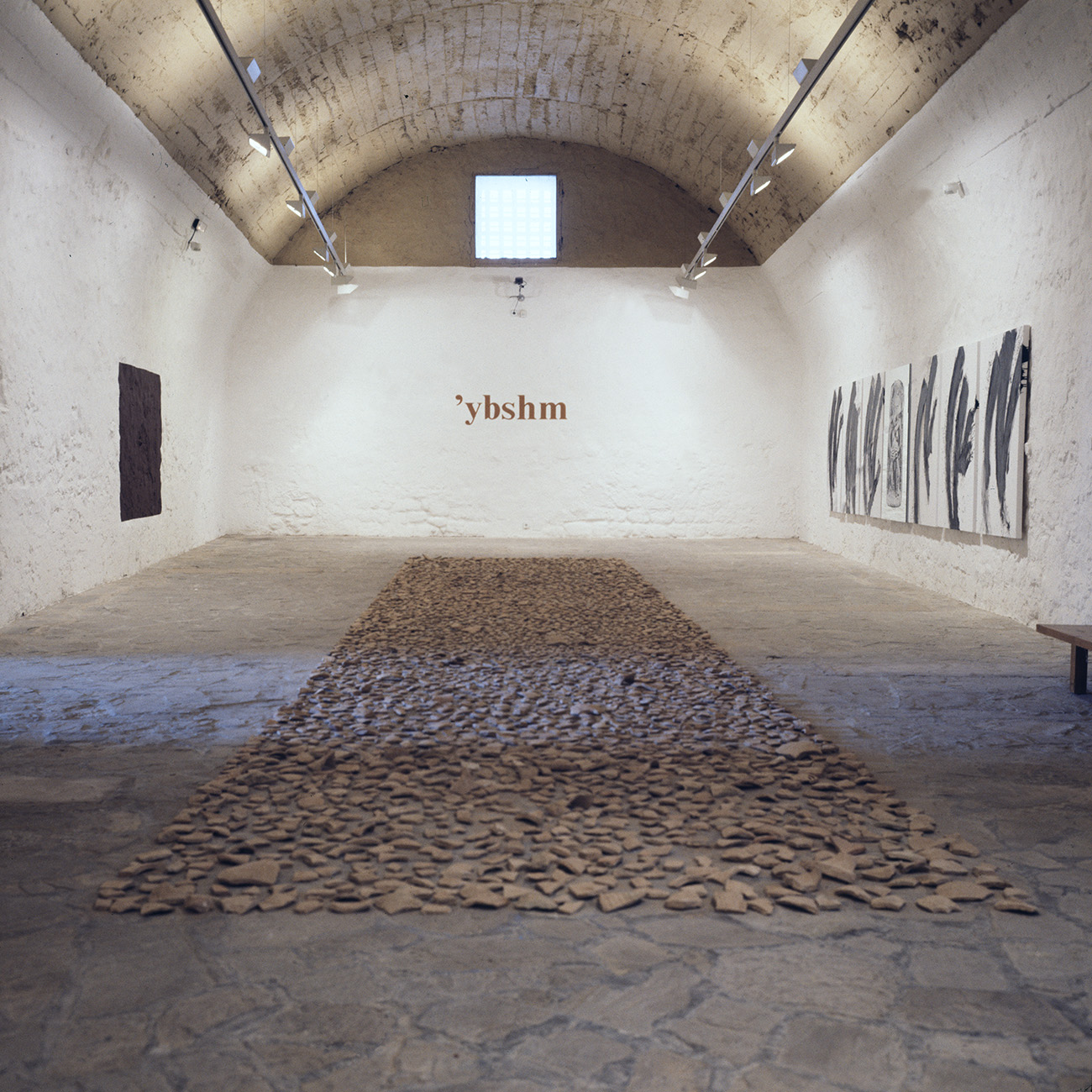
In Ibiza in 1993, the painter reconfigures his motif which will take on a new look. The pretext is the origin of the name of the island, Ybshm, linked to Bes, an Egyptian god who is both protector of the home and of the family. A quote from Theodor Heuss, the president of the Federal Republic of Germany from 1949 to 1959, introduces the exhibition-intervention : « A state can destroy itself, a people will survive. »
In the middle of the first vaulted room of the city’s Museum of Contemporary Art, fragments of terracotta from the stores of the archaeological museum are piled up, while in the second room, a similar strip, formed of cement blocks, is all so scrupulously ordered. On the walls of the two rooms are paintings. The disparity and discontinuity of the elements brought together open up the possibility of a journey between past and present.
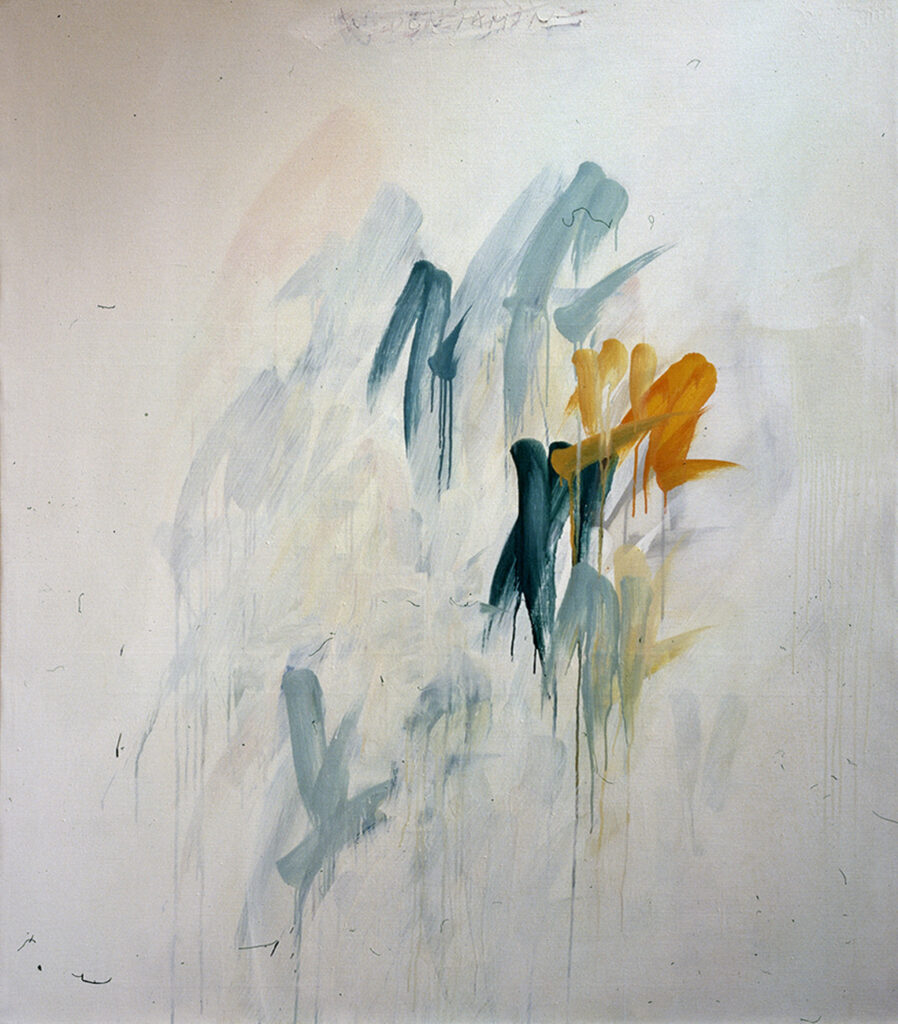
In 1996, Pfnür introduces a new formal principle into his work, namely, an alphabet made up of 25 signs which correspond to as many letters. He calls it Pictogram. From now on he will scrupulously « write » canvases by reproducing, in his own language of colors and signs, the words of others, especially thinkers with whom he maintains a close relationship such as Walter Benjamin, Cornelius Castoriadis or Guy Debord.
With patience, he scrupulously copies fragments of their works into his alphabet. It is a way of approaching them, of giving them tribute. On these last canvases, the signs fit together and intertwine to metamorphose into a luminous texture of almost monochrome colors as if the painting were the repository of the presence of an internalized world.
At the Sa Nostra Foundation in Ibiza and Palma, there will be two installations called Words. In Ibiza, on the walls, pictograms refer to short sentences with an open meaning ; on the ground, stone alignments and neon sculptures. In Palma, the luminous sculptures redraw the words of the Catalan poet Villangomez.
Painted in 2003 and 2004 in the studio of Santa Gertrudis, these latest paintings resonate with Friedrich Hölderlin’s « Seasons » cycle. With his alphabet woven of signs and colors, the painter humbly reproduces the words of the German poet on papers and canvases. The Spanish writer and poet Antonio Colinas will write about the last paintings of Rainer Pfnür : « We could say that they inhabit poetry. Poetry in the sense that it is in this extreme way that a conscious being exists and inhabits the earth. »
The tragic death of Rainer Pfnür, hit by a car the night of February 25th, 2005 in Santa Gertrudis de Fruitera, interrupts his trajectory.
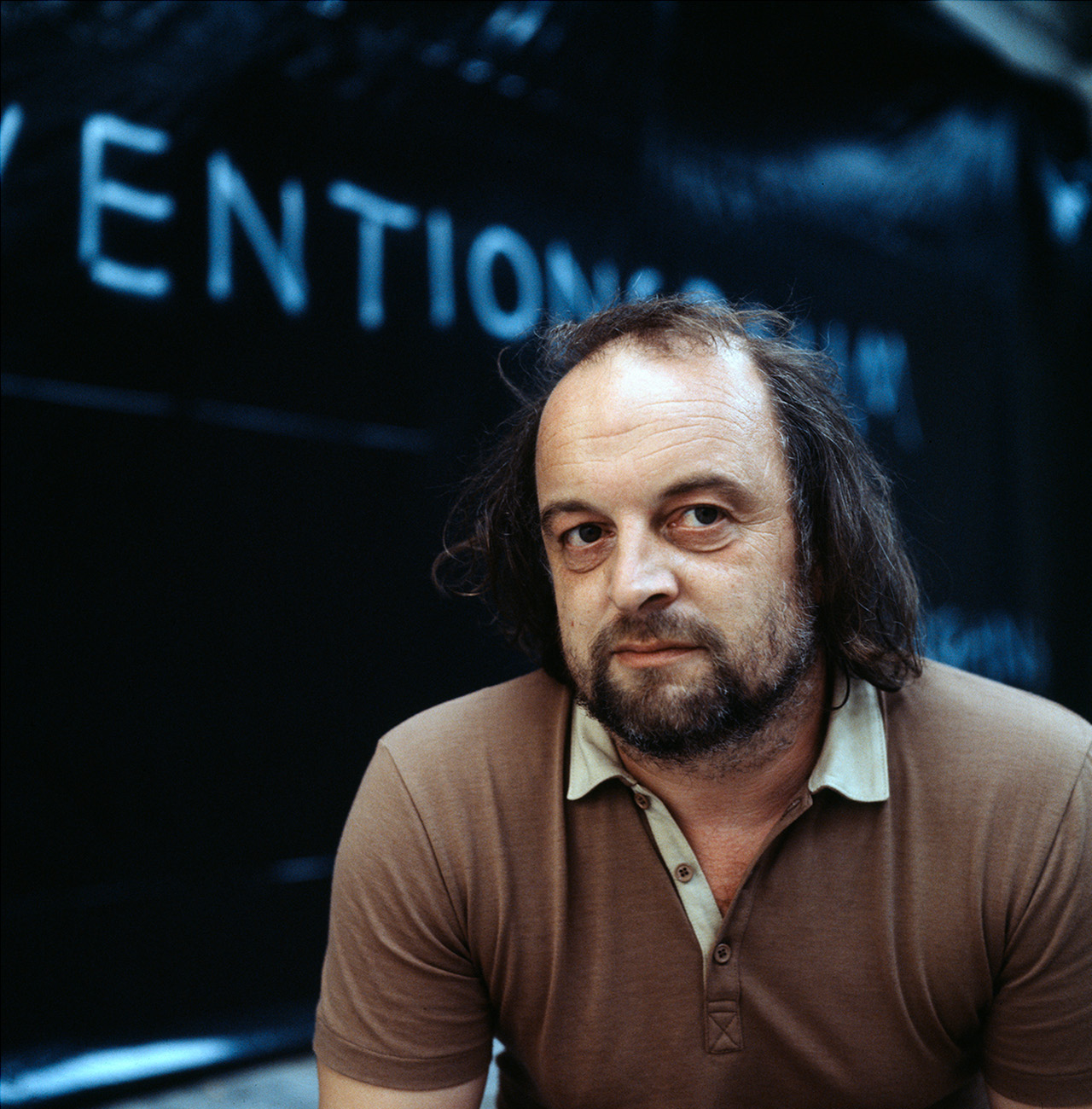
–
Solo exhibitions
1968 Galerie Atelier-Theater, Bern.
Galerie Melisa, Lausanne.
Galerie-Club, Lausanne.
1970 Via Arbarei, San Sperate, Sardinien.
Galerie Verena Müller, Bern.
Galerie Bel-Air-Art, Genf.
1971 Galerie Il Traghetto, Venedig.
1972 Galerie Tino Ghelfi, Vicenza.
Galerie Ivan Spence, Ibiza.
Galerie Studio 3-Bi, Bolzano.
Galerie Baumeister, München.
1974 Galerie Mewes, Hamburg.
Galerie im Fernsehen, München.
1975 Stadt.Galerie im Schaezler Palais, Augsburg.
1976 A-U Raum, Regensburg.
Galerie Tanit, München.
Galerie Baumeister, München.
1977 Centre culturel allemand, Paris.
Galerie Kerlikowsky, München.
1978 Galerie Tanit, München.
Galerie Pacifico, Kopenhagen.
Galerie Il Traghetto, Venedig.
1979 Galerie Tanit, München.
1982 Kunstforum der Stadt. Galerie im Lenbachhaus, München.
Galerie Tanit, München.
1983 Museo d’Art Contemporani, Ibiza.
1984 Galerie Carla Fuehr, München.
1985 Galerie Lang, Wien.
1986 Galerie Carla Fuehr, München.
1987 Sa-Nostra, Ibiza.
Galerie Nane Stern, Paris.
Centre culturel allemand, Paris.
1988 Musée des Beaux-arts, Rodez.
Galerie Nane Stern, Paris.
Galerie Carla Fuehr, München.
1989 École des Beaux-arts, Valence.
Galerie Carl Van der Voort, Ibiza.
1991 Verticale, Hauptzollamt, München.
Galerie von Braunbehrens, München.
Projects, Centre culturel allemand, Paris.
Aqua-Tinta, Verein für Original- Radierung, München.
Kunstring Sundern, Stadtgalerie, Sundern.
1992 Galerie Bamberger, Mannheim.
Galerie Klaus Braun, Stuttgart.
1993 Blue-Bird, Galerie Carl Van der Voort, Ibiza.
`ybshm, Museu d`Arte Contemporani, Ibiza.
Ich bin das Glück dieser Erde,Usine-Fromage, Rouen.
1994 Galerie von Braunbehrens, München.
Galerie Janos, Paris
1996 Cita con Sekito, Galeria Van der Voort, Ibiza.
1997 Words-II, Sa-Nostra, Palma.
Words, Sa-Nostra, Ibiza.
Galerie im Rathaus, (mit Fritz u.Gerner), München.
2002 Zeitkunstgalerie, Kitzbühel, Austria.
Group exhibitions (selection)
1970 Galerie Melisa, Lausanne.
1972 Sieben, Künstlerhaus, Wien.
Ibizagrafik 72, Ibiza.
Olympia-Ausstellung, Kunstverein, München.
1973 IIIe Biennale Internationale de l’Estampe, Musée Galliera, Paris.
Estampe contemporaine, Bibliothèque Nationale, Paris.
1974 KKKK, Kunstverein München.
1976 Ibizagrafik 76, Ibiza.
1979 Individuelle Strukturen, Kunstverein, München.
Ibizagrafik 79, Ibiza.
Lothringerstrasse, München.
1980 Intern.Kunstmarkt, Düsseldorf (Einzelstand).
ART-Basel, Galerie Tanit.
FIAC-Paris, Galerie Tanit.
Dos Jornadas de Arte, Sta.Gertrudis, Ibiza.
1981 ART-Basel, Interventions-Raum, Galerie Tanit.
Lichtbilder, Lothringerstrasse, München.
1982 Ibizagrafik `82, Ibiza.
Kulturpreis der Stadt Ibiza.
1983 Übergãnge, Lothringerstrasse, München.
1984 FIAC-Paris, Galerie Lang.
Galerie Carla Fuehr, München.
1988 Forum-Hamburg, (Einzelstand), Galerie Nane Stern.
1990 Galerie Carla Fuehr, München.
1991 FIAC-Paris, Galerie Tanit.
1992 Ibizagrafik `92, Ibiza, (Ehrenpreis).
1992 ART-Frankfurt, Galerie von Braunbehrens.
1992 Kunstmarkt Köln, Galerie von Braunbehrens.
1996 Abstraccions, Sa Llonja, Palma.
2003 Eivissa, Sa Llonja, Palma.
Le Courrier s’expose, Abbaye de Daoulas, Daoulas
2004 Abstraccions, Can-Tixedo, Ibiza, Es.
2007 Je t’écris une toile, Sa-Nostra, Ibiza.